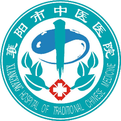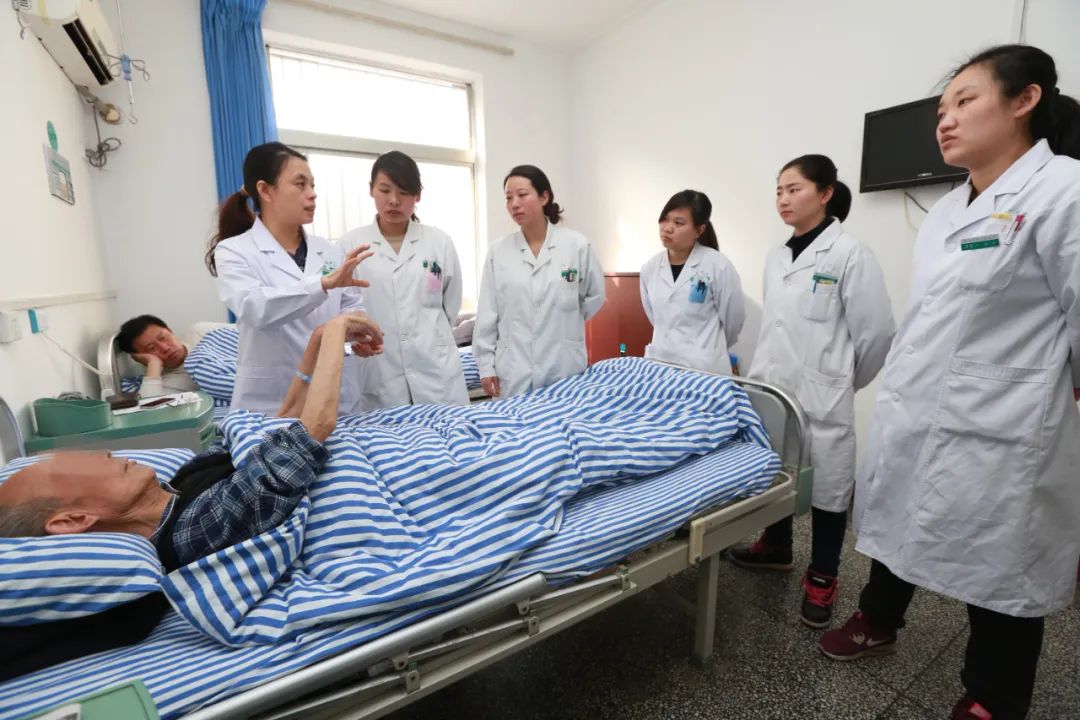
▲Director of Acupuncture Department, Yan Yan, leads ward rounds (archive photo)
 Acupuncture has a long history, with legends stating that it originated during the era of the Three Sovereigns and Five Emperors, when Fuxi invented acupuncture, having “tasted a hundred herbs and created nine needles.” Today, acupuncture, as an external treatment discipline, requires the professional diagnosis of a TCM physician. By using fine needles to stimulate acupuncture points, or assisted by moxibustion, it stimulates the meridians, promoting overall body function and regulating the organs.The Acupuncture Department of Xiangyang Traditional Chinese Medicine Hospital was established in 1957, featuring prominent traditional diagnostic and treatment characteristics, integrating medical care, education, and research into a high-level acupuncture department. In 2010, the acupuncture department opened an inpatient ward, continuously expanding the range of treated conditions, resembling a “kaleidoscope” that encompasses various patients, showcasing the charm of classical medicine in disease management and health preservation.
Acupuncture has a long history, with legends stating that it originated during the era of the Three Sovereigns and Five Emperors, when Fuxi invented acupuncture, having “tasted a hundred herbs and created nine needles.” Today, acupuncture, as an external treatment discipline, requires the professional diagnosis of a TCM physician. By using fine needles to stimulate acupuncture points, or assisted by moxibustion, it stimulates the meridians, promoting overall body function and regulating the organs.The Acupuncture Department of Xiangyang Traditional Chinese Medicine Hospital was established in 1957, featuring prominent traditional diagnostic and treatment characteristics, integrating medical care, education, and research into a high-level acupuncture department. In 2010, the acupuncture department opened an inpatient ward, continuously expanding the range of treated conditions, resembling a “kaleidoscope” that encompasses various patients, showcasing the charm of classical medicine in disease management and health preservation.
Fine Needles for Pain Relief and Disease Alleviation
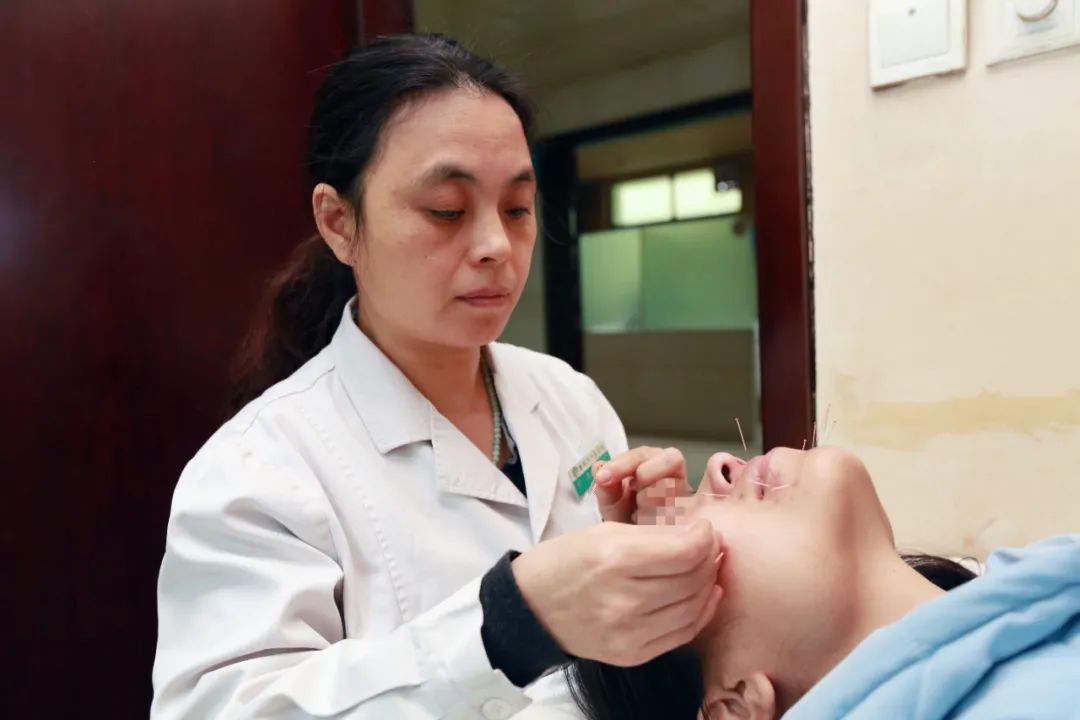
▲Director Yan Yan treats a patient (archive photo)
On June 2, at the outpatient clinic of the acupuncture department, 83-year-old Mr. Wang gave a thumbs up to the medical staff: “Acupuncture is a national treasure, and it must be well inherited.”
Mr. Wang suffered from trigeminal neuralgia due to shingles affecting his head and face, with pain particularly severe at night, feeling like “lightning.” After a week of acupuncture treatment by Director Yan Yan, the patient’s pain significantly decreased, allowing him to finally sleep soundly at night.
“Acupuncture can treat over 200 diseases, truly embodying the saying ‘acupuncture treats a hundred ailments.'” Speaking of acupuncture, Yan Yan’s eyes sparkled with confidence; with over 20 years of experience, she has cured tens of thousands of patients, continuously expanding the range of treated conditions.
59-year-old Ms. Lin (pseudonym) had experienced urinary incontinence for over 10 years, which had become increasingly severe, needing to go to the bathroom every hour, and experiencing leakage when going downstairs or lifting heavy objects. On May 4, Ms. Lin came to the acupuncture department for treatment upon a friend’s recommendation.
Examinations indicated that the patient’s bladder was significantly reduced, and the pelvic floor muscles were relaxed. Yan Yan diagnosed and treated her using 5.5-inch long fine needles to stimulate acupuncture points such as Changqiang (长强) and Huiyin (会阴) near the uterus. Additionally, she directly stimulated the muscle groups near the bladder and urethra to awaken the “sleeping” bladder, activating muscle activity, tonifying kidney qi, and balancing yin and yang, thereby improving the urinary incontinence.
After 10 treatments, Ms. Lin’s pelvic floor function significantly improved, and her incontinence issue was finally resolved.
“The acupuncture department has a wide range of treatments suitable for everyone from infants to centenarians.” Yan Yan explained that acupuncture can treat conditions such as facial paralysis, melasma, stroke and its sequelae, insomnia, headaches, rhinitis, trigeminal neuralgia, neck, shoulder, waist, and leg pain, obesity, dysmenorrhea, tinnitus, pelvic floor rehabilitation, and adolescent mental disorders.
Balancing Yin and Yang for Youthful Focus
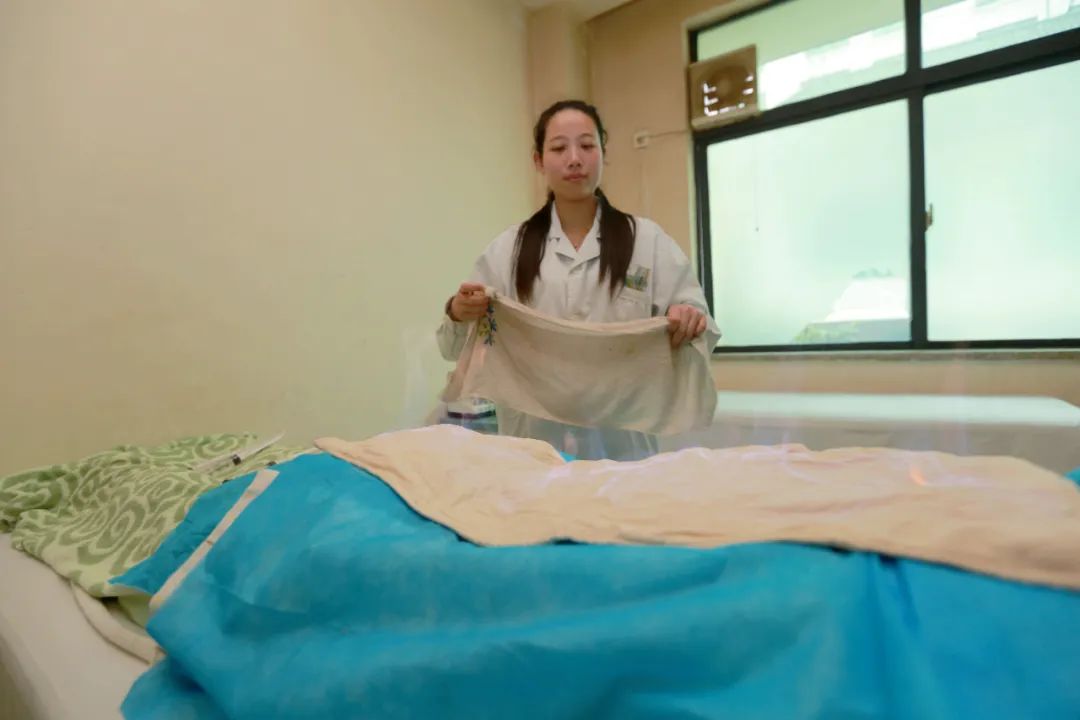
▲ Fire Dragon Moxibustion Therapy (archive photo)
“One needle, one medicine travels the world,” is a traditional TCM physician’s skill. How to integrate Eastern and Western medicine to maximize patient benefits?
Acupuncture physician Pan Long focuses on the mental health of adolescents. In February 2021, Pan Long studied for a year in the psychiatry department of Hubei Provincial People’s Hospital. Upon returning, he employed a combination of Chinese and Western medicine to treat adolescent mental issues, gaining recognition from both parents and students.
Mental disorders refer to a category of diseases caused by various factors such as external pathogens, emotional disturbances, dietary irregularities, and injuries, leading to an imbalance of yin and yang and dysfunction of the organs, resulting in abnormal brain nerve function and various mental activity disorders.
Qiqi (pseudonym), a 13-year-old boy, just started middle school but was struggling academically, lacking energy in class, unable to concentrate, wanting to excel but unable to keep up, leaving his parents anxious.
In March of this year, his parents brought Qiqi to the acupuncture department seeking TCM treatment. After examination, Pan Long found Qiqi’s eyes lacked spirit, and his pulse was soft and weak. Through diagnosis, Pan Long prescribed two types of Chinese herbal medicine for internal regulation, one to boost yang in the morning and the other to nourish blood and calm the spirit at night, balancing yin and yang, while also incorporating acupuncture treatment (three times a week) and psychological counseling.
After a week of treatment, Qiqi’s spirit improved significantly, and his parents happily reported, “The child is now focused in class.”
“TCM treatment of mental disorders can also reduce the side effects of Western medications. Its therapeutic methods are unique, emphasizing holistic approaches, yin-yang balance, and syndrome differentiation, aligning with the modern medical model of ‘biopsychosocial.'” Yan Yan stated that the department will establish a TCM psychological clinic to provide personalized syndrome differentiation treatment for patients with mental disorders.
Treating Rhinitis with Acupuncture’s ‘X-ray Vision’
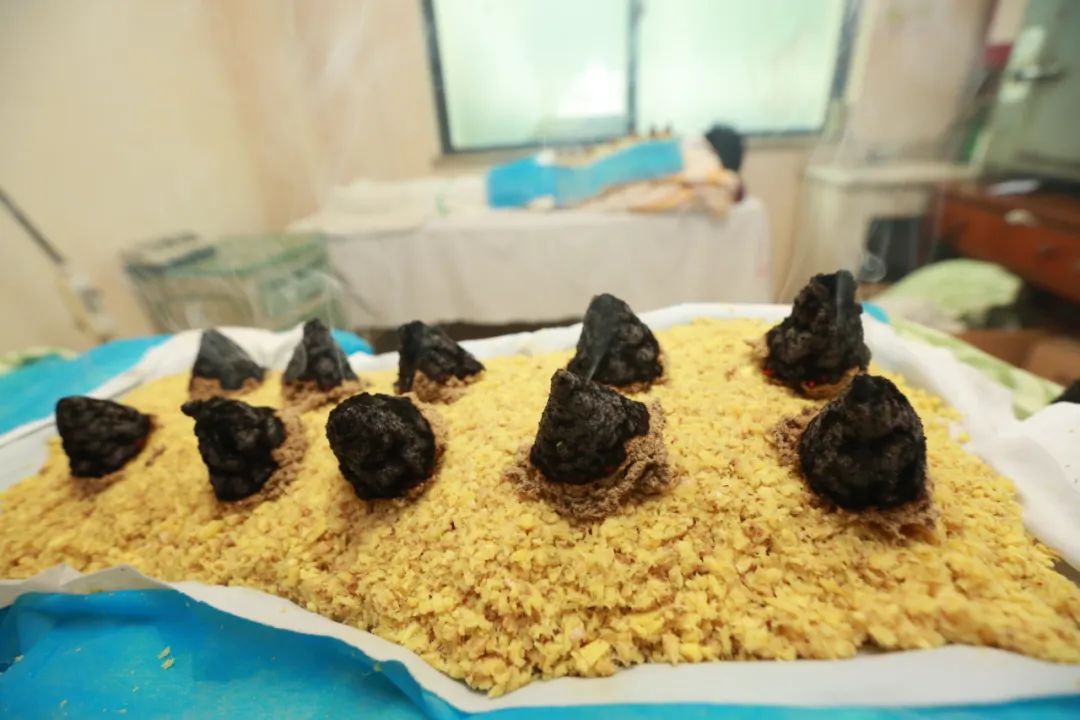
▲ Du Mai Moxibustion Therapy (archive photo)
Currently, the acupuncture department offers services including acupuncture, moxibustion, electroacupuncture, three-edged needles, cupping, fire needling, warm needling, small needle knife, plum blossom needles, painless acupuncture, acupuncture point embedding, topical application, laser acupuncture, microwave therapy, heat-sensitive umbilical moxibustion, Du Mai moxibustion, Fire Dragon moxibustion, and various other specialized TCM therapies.
In April 2021, the acupuncture department introduced ultrasound-guided visual needle knife surgery, where ultrasound acts as the doctor’s “third eye,” providing precise acupuncture point treatment and reducing iatrogenic injuries. This technique is used to treat dysmenorrhea, urinary incontinence, allergic rhinitis, and other conditions.
Little Mei (pseudonym), a high school freshman, suffered from allergic rhinitis leading to headaches and dizziness. In August last year, accompanied by family, she came to the acupuncture department for treatment. TCM physician Zhao Jing utilized ultrasound guidance to first use a 3.5-inch fine needle (a specially designed long needle made of fine, elastic stainless steel wire, named for its shape resembling wheat awns, with a length of about 3-6 inches) to stimulate the pterygopalatine ganglion, followed by using a small needle knife to release points such as Fengchi (风池), Fengfu (风府), and Yingxiang (迎香). After a course of treatment (once a week for four sessions), Little Mei’s allergic rhinitis gradually improved.
“The effects of acupuncture treatment are cumulative; with two years of standardized treatment, 60-80% of rhinitis patients can recover,” Zhao Jing explained. She had previously studied ultrasound-guided visual needle knife surgery at Beijing-Japan Friendship Hospital and brought this technique back to Xiangyang to benefit many patients.
Both acupuncture and Chinese herbal medicine fall under the umbrella of TCM, but compared to internal herbal treatments, acupuncture acts as a “quick remedy,” especially effective for various pain conditions. While ensuring the inheritance of TCM, the acupuncture department is also enhancing specialized training, learning new techniques and methods to provide high-quality TCM services to the citizens of Xiangyang.
(Kang Jian, Li Li, Yang Xingzhou)

Planning: Ding Zhihong
Editor: Gao Chuang
Reviewed by: Kang Jian Li Li
“Guided by TCM, Scientific Health Preservation”
Scan the QR code in the image below
to follow health science knowledge

